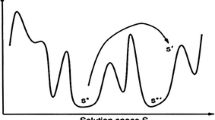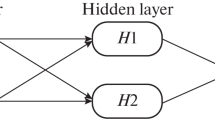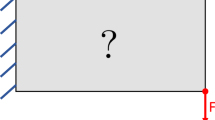Abstract
A hierarchical neural-network-based approach for circuit tuning at the post-fabrication stage is proposed. In this approach, measurements that characterize the behavior of the circuit under test are first selected. The best candidates of circuit parameters for tuning are also determined. A training set comprising the selected circuit measurements is then constructed. These measurements are calculated during simulations in which the circuit parameter values are uniformly distributed in a tolerance region around their nominal values. The training set is fed to a self organizing map neural network to cluster the measurements. The generated clusters are manipulated and classified via a hierarchical circuit tuning procedure. Based on this classification, tuning values for the tuning parameters are calculated. Situations in which the circuit cannot be tuned are also addressed. Experimental results indicate that the developed approach provides a robust and efficient technique for circuit tuning.








Similar content being viewed by others
References
Abdel-Malek HL (1991) Tunability of biquadratic responses. IEEE Trans Circuits Syst 38(2):223–227
Bandler JW, Liu PC, Tromp H (1976) A nonlinear programming approach to optimal design centering, tolerancing, and tuning. IEEE Trans Circuits Syst 23(3):155–165
Polak E, Vincentelli AS (1979) Theoretical and computational aspects of the optimal design centering, tolerancing and tuning problem. IEEE Trans Circuits Syst 26:795–813
Yu J, Fidler JK (1996) An automatic LC filter tuning system by optimisation. In: Proceedings of the 3rd IEEE international conference on electronics, circuits, and systems (ICECS’96), Rodos, Greece, October 1996, pp 215–218
Abdel-Malek HL, Bandler JW, Biernacki RM (1982) A one-dimensional minimax algorithm based on biquadratic models and its application in circuit design. IEEE Trans Circuits Syst 29:58–62
Bandler JW, Biernacki RM (1980) Postproduction parameter identification and tuning of analog circuits. In: Proceedings of the European conference on circuit theory and design (ECCTD’80), Warsaw, Poland, September 1980, 2:205–220
Pinel JF (1971) Computer-aided network tuning. IEEE Trans Circuit Theory 18:192–194
Gleissner E (1976) Some aspects on the computer aided tuning of networks. In: Proceedings of the IEEE international symposium on circuits and systems (ISCAS’76), Munich, Germany, April 1976, pp 726–729
Jervis BW, Crofts M (1991) Comparison of computer-aided tuning algorithms applied to the amplitude response of passive analogue filters. IEE Proc–G 138(3):363–371
Mirzai AR, Cowan CFN, Crawford TM (1989) Intelligent alignment of waveguide filters using a machine learning approach. IEEE Trans Microwave Theory Techn 37(1):166–173
Tsaptinos D, Mirzai AR, Jervis BW, Cowan CFN (1990) Comparison of knowledge elicitation techniques in the domain of electronic filter tuning. IEE Proc–F 137(5):337–344
Liu PCK, Chung VWW (1995) Two-stage neural network scheme for post-fabrication circuit tuning. Electronics Lett 31(12):963–964
Cowan CFN, Grant PM (1985) Adaptive filters. Prentice Hall, Englewood Cliffs, New Jersey
Quinlan JR (1986) Induction of decision trees. Mach Learning 1:81–106
Stenbakken G, Souders T (1994) Developing linear error models for analog devices. IEEE Trans Instrum Meas 43:157–163
Kohonen T (1990) The self-organizing map. Proc IEEE 78(9):1464–1480
Fukunaga K (1990) Introduction to statistical pattern recognition. Academic Press, Boston, Massachusetts
Kolman B (1997) Introductory linear algebra with application, 6th edn. Prentice Hall, Englewood Cliffs, New Jersey
El-Gamal MA, Abu El-Yazeed MF (1999) A combined clustering and neural network approach for analog multiple hard fault classification. J Electronic Test Theory Appl 14:207–217
El-Ayadi M (2003) A modified Gaussian mixture model-based speaker identification system. MSc thesis, Cairo University, Egypt
Kohonen T (2001) Self-organizing maps, 3rd edn. Springer, Berlin Heidelberg New York
Haykin S (1999) Neural networks: a comprehensive foundation, 2nd edn. Prentice Hall, Englewood Cliffs, New Jersey
Kohonen T, Kaski S, Lagus K, Salojärvi J, Honkela J, Paatero V, Saarela A (2000) Self organization of a massive document collection. IEEE Trans Neural Netw 11(3):574–585
Su M-C, Chang H-T (2000) Fast self-organizing feature map algorithm. IEEE Trans Neural Netw 11(3):721–733
Tomsich P, Rauber A, Merkl D (2000) Optimizing the parSOM neural network implementation for data mining with distributed memory systems and cluster computing. In: Proceedings of the 11th international workshop on database and expert systems applications (DEXA 2000), London, UK, September 2000, pp 661–665
Kohonen T, Oja E, Simula O, Visa A, Kangas J (1996) Engineering applications of the self-organizing map. Proc IEEE 84(10):1358–1384
Yu S, Jervis BW, Eckersall KR, Bell IM, Hall AG, Taylor GE (1994) Neural network approach to fault diagnosis in CMOS opamps with gate oxide short faults. Electronics Lett 30(9):695–696
Collins P, Yu S, Eckersall KR, Jervis BW, Bell IM, Taylor GE (1994) Application of Kohonen and supervised forced organization maps to fault diagnosis in CMOS opamps. Electronics Lett 30(22):1846–1847
Somayajula SS, Sáncher-Sinencio E, Pineda de Gyvez J (1996) Analog fault diagnosis based on ramping power supply current signature clusters. IEEE Trans Circuits Syst–II 43(10):703–712
Yang H-C, Lee C-H (2000) Automatic category generation for text documents by self-organizing maps. In: Proceedings of the IEEE-INNS-ENNS international joint conference on neural networks (IJCNN 2000), Como, Italy, July 2000, 3:581–586
Bandler JW, Charalambous C (1972) Practical least pth optimization of networks. IEEE Trans Microwave Theory Tech 20:834–840
SOM Toolbox for Matlab (2004) Available at http://www.cis.hut.fi/projects/somtoolbox
Author information
Authors and Affiliations
Corresponding author
Rights and permissions
About this article
Cite this article
El-Gamal, M.A., Abdel-Malek, H.L. & Sorour, M.A. A neural-network-based approach for post-fabrication circuit tuning. Neural Comput & Applic 14, 25–35 (2005). https://doi.org/10.1007/s00521-004-0438-8
Received:
Accepted:
Published:
Issue Date:
DOI: https://doi.org/10.1007/s00521-004-0438-8




